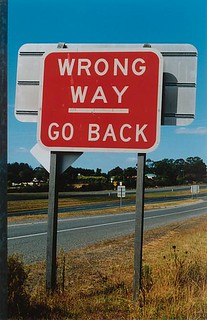
Simply increasing the spacing between letters improves the reading ability of children with developmental
dyslexia, according to a group of Italian and French researchers (
Zorzi et al., 2012). Dyslexic children were 20% faster and twice as accurate when reading the altered text. This impressive result was obtained without any prior training whatsoever.
The study was based on the phenomenon of
crowding, where the recognition of individual letters is impaired by the close proximity of surrounding letters. Children with dyslexia are disproportionately affected by crowding, compared to normally developing children (
Martelli et al., 2009). Other aspects of the printed word are known to affect reading ability, but surprisingly little is known about letter spacing. The recommendations of the
British Dyslexia Association include optimizing the size and type of font, page layout, headings, type of paper, and line spacing but
not letter spacing.
1 The collaborative effort was a deliberate attempt to compare two languages that have different types of spelling-to-sound translation. Italian has completely regular spelling rules (a transparent
orthography), meaning there are no exception words. Each combination of printed letters is always pronounced in a consistent way. By contrast, written French is orthographically opaque, meaning that pesky irregular spellings can trip you up. This is true in English as well: compare the pronunciation of the word "pint" to "hint", "mint", and "lint". The /i/ sound wins out over the /ī/ sound, in terms of regularity.
In the study, 34 Italian and 40 French children with dyslexia were tested on two separate occasions at least two weeks apart. They read 24 short sentences, which were written in standard text in one session and highly spaced text in the other. The order of sessions was counterbalanced to control for practice effects,
2 with half assigned to read the spaced text at T1 and the other half at T2. Reading accuracy (number of errors) and reading speed (number of syllables per second) both interacted with test session (p<.0001), indicating a drastic improvement with the highly spaced text. This was true for both the Italian and the French children with dyslexia.
 Fig. 2 (Zorzi et al., 2012). (C) Reading accuracy (number of errors) in the normal and spaced text conditions for Italian dyslexics, French dyslexics, and a younger group of Italian control children matched for reading level (RL) to the Italian dyslexic sample.
Fig. 2 (Zorzi et al., 2012). (C) Reading accuracy (number of errors) in the normal and spaced text conditions for Italian dyslexics, French dyslexics, and a younger group of Italian control children matched for reading level (RL) to the Italian dyslexic sample. It came as quite a surprise to me that no one had demonstrated this letter spacing effect before. But then again, I'm not familiar with the literature on developmental reading disorders, so perhaps
Professor Dorothy Bishop or
Livia Blackburne can provide a more critical take on an
[apparently] amazing finding.
Finally, the authors have developed
DYS, a free iPhone/iPad application. You can test out the spacing effect for yourself and submit your results anonymously, in the name of science!
For more information, see the
WSJ Health Blog.
Footnotes 1 Also note that
bold is preferable to
italic, as the latter induces crowding.
2 A control experiment in a different group of children presented the normal and spaced text within a single session, again in counterbalanced order. The critical difference here was that different sentences were used in each condition, so practice effects wouldn't be an issue.
ReferencesMartelli M, Di Filippo G, Spinelli D, Zoccolotti P (2009).
Crowding, reading, and developmental dyslexia.
J Vis 9: 14, 1–18.
Marco Zorzi, Chiara Barbiero, Andrea Facoetti, Isabella Lonciari, Marco Carrozzi, Marcella Montico, Laura Bravar, Florence George, Catherine Pech-Georgel, and Johannes C. Ziegler (2012). Extra-large letter spacing improves reading in dyslexia. PNAS. doi:10.1073/pnas.1205566109.




